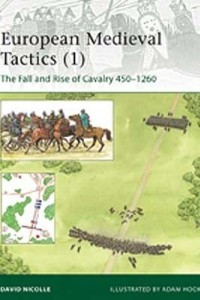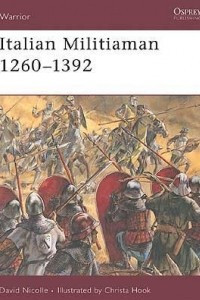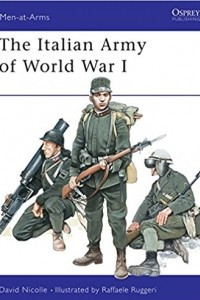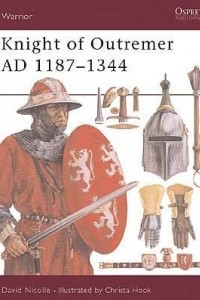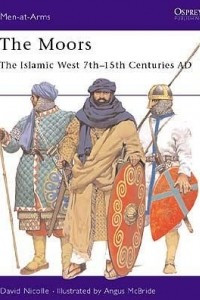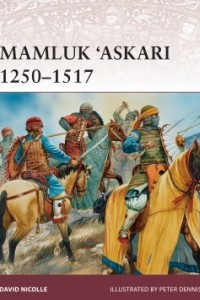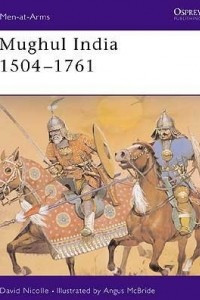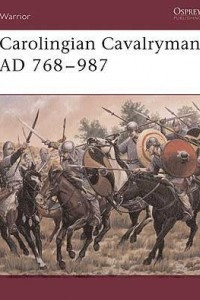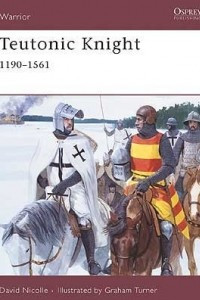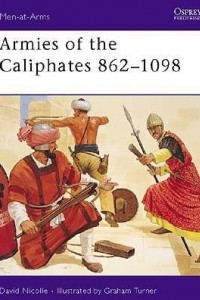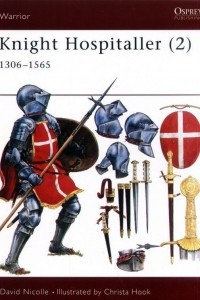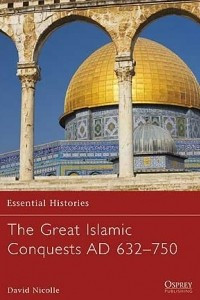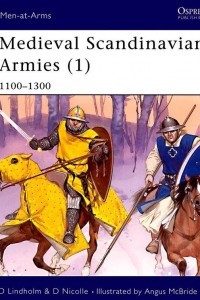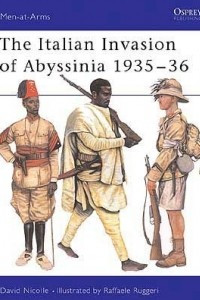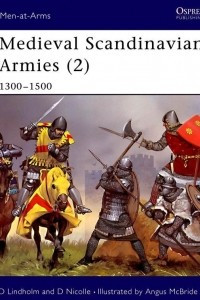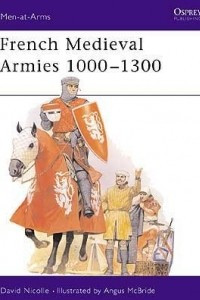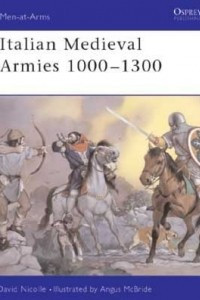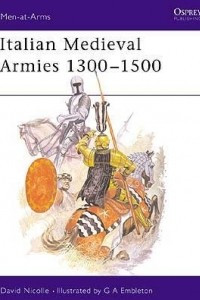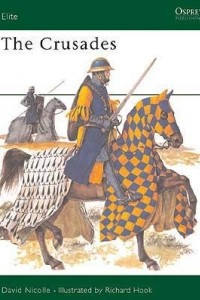- Главная
- Авторы
- David Nicolle
- Книги David Nicolle
Книги David Nicolle
David Nicolle - автор 32 книг. Из известных произведений можно выделить: Forces of the Hanseatic League: 13th–15th Centuries, The Italian Army of World War I, The Moors: The Islamic West 7th–15th Centuries AD. Все книги можно читать онлайн и бесплатно скачивать на нашем портале.
After the fall of the Western Roman Empire there was a decline in 'professional' cavalry forces, and infantry dominated in the Germanic successor 'barbarian' kingdoms. In the Carolingian and Norman periods from the 9th to the 11th centuries, the cavalry arm gradually expanded from the small remaining aristocratic elite. Even so, the supposedly complete dominance of the 'knight' in the 12th and 13t...
With the development in the 13th century of co-operative tactics using crossbowmen and heavy spearmen, circumstance began to arise in which the charge by Muslim horse-archers, and then by European armoured knights, could be defied. Infantry were far cheaper and easier to train than knights, and potentially there were far more of them. Tactics emerged by which more numerous and more varied infantry...
The Hanseatic League was a commercial and defensive federation of merchant guilds based in harbour towns along the North Sea and Baltic coasts of what are now Germany and her neighbours, which eventually dominated maritime trade in Northern Europe and spread its influence much further afield. The League was formed to protect the economic and political interests of member cities throughout a vast a...
Medieval Italy was characterized by regular warfare among its numerous city-states, as well as internal strife within comunes as aristocratic factions fought each other for domination of the cities' governments. In this context, Italian warfare developed quickly, with the crossbow playing a key role in improving the armour technology of the Italian city militias that used them. This book traces th...
The dilemma of the young Italian kingdom and the experience of her army in World War I (1914-1918) were unique among the combatant nations. Late to enter the war against the Central Powers, she faced a massively defended Austro-Hungarian front in the north, including strong mountain features, as well as distractions in the Balkans and a simultaneous rebellion in her Libyan colony. Costly and repea...
After Saladin's great victory at the Battle of Hattin in 1137, Outremer, as medieval westerners called the remaining Latin or Catholic enclaves in the eastern Mediterranean, was no longer a threat to Islam. Its military elites preferred to live in peace, focusing on trade as much as on the defence of Christendom's holy places. In this, the first book in the English language to objectivel...
The high point of medieval Islamic expansion was the 700-year presence of the 'Moors' in Spain and Portugal. The Arab and Berber conquest was followed by the establishment of a richly distinct culture in Andalusia, where for a while Muslim and Christian co-operated as often as they fought. The rise and fall of successive Islamic dynasties brought new invaders, fragmentation and disunity; and the g...
New archaeological material and research underpins this extensive, detailed and beautifully illustrated account of the famous Mamluk Askars who are credited with finally defeating and expelling the Crusaders, halting the Mongol invasion of the Islamic Middle East, and facing down Tamerlane. Probably the ultimate professional soldiers of the medieval period they were supposedly recruited as adolesc...
Babur, the founder of the Mughul dynasty, was of Turco-Mongol origin he was descended from Timur-i-Lenk [Tamerlane] on his father's side and Genghiz Khan on his mother's. His first raid into India in 1516 was followed by several others, and by the time of his death in 1530 Babur's troops had reached Bengal on the far side of the sub-continent. With eight fine full page colour plates by Angus McBri...
Following the Balkan Wars of 1912-1913, the Ottoman Empire undertook a massive military retraining program. Although many histories have depicted the Ottomans as a poor fighting force, this was more often due to poor leadership and logistics. The typical Ottoman soldier, the asker, was tough, well-trained, and courageous. While fighting over varied terrain from Gallipoli, to Mesopotamia and to the...
The army of Charlemagne and his successors enabled the western Franks to recreate what contemporaries regarded as a 'reborn' western Roman empire. Frankish society was well prepared for war, with outstanding communications drawing together the disparate regions of a large empire. The role of mounted troops, the essential striking force of the Frankish army, is explored here. Alongside it was the i...
The Military Order of Teutonic Knights was one of the three most famous Crusading Orders, on a par with the Templars and the Hospitallers. Originally focusing on the preservation of the Crusader States in the Middle East, after the loss of their Middle Eastern enclaves in the 13th century, the Knights turned their attention to the Baltic. Over the next two centuries Northern Crusades were conducte...
The 8th century heralded the start of a golden age in the history of the Islamic world. At this time, the Sunni Muslim 'Abbãsid Caliphate, with its capital at Baghdad, ruled virtually the entire Islamic world. Islamic military power peaked in the 9th century, but by the end of this golden age in the 11th century, the 'Abbãsid Caliphs had little political and virtually no military power. Featuring ...
Unlike their sometime rivals the Templars, the Order of St John of the Hospital of Jerusalem (or the Hospitallers as they are better known) was not created as a result of the First Crusade in 1099: rather, it was probably established by a group of Italian merchants from Amalfi in the mid-11th century. However, as a consequence of the crusading movement, the Hospitallers became recognised experts i...
Having campaigned on land during their early existence, the Hospitallers fought mainly at sea from the turn of the 14th century. The emphasis was now on small-scale operations, rather than the crusading invasion that had so often come to grief. Having conquered Rhodes, the Order fortified it and transferred there in 1309. A period of on-off warfare with the Mamluks became full-blown conflict with ...
Although the Byzantine Empire was a continuation of the Roman Empire and faced similar military problems, its solutions were very different. In North Africa, for example, Rome's large army concentrated on securing main roads and urban centres. Byzantium's smaller army built more fortifications and took a defensive stance. The most striking characteristic of later Byzantine military thinking was, h...
Few centuries in world history have had such a profound and long-lasting impact as the first hundred years of Islamic history. In this book, David Nicolle examines the extensive Islamic conquests between AD 632 and 750. These years saw the religion and culture of Islam erupt from the Arabian Peninsula and spread across an area far larger than that of the Roman Empire. The effects of this rapid exp...
While Scandinavia's 'Viking Age' is one of the most studied aspects of early medieval history, much less has been published about the centuries that followed. Yet the armies of Sweden, Norway and Denmark offer fascinating differences from the rest of medieval Western Europe, both in their organisation and their war gear - due partly to their remoteness, climate and terrain, but part...
In October 1935 Mussolini ordered the invasion of Ethiopia from Italian-held Eritrea and Somaliland, thinking that he would easily crush an ill-prepared and badly equipped enemy. The Italians, in the face of widespread condemnation from the League of Nations, spread terror and destruction through their indiscriminate use of air power and poison gas against an enemy more used to medieval methods of...
While Scandinavia's 'Viking Age' is one of the most studied aspects of early medieval history, much less has been published about the centuries which followed. Yet the armies of Sweden, Norway and Denmark offer fascinating differences from the rest of medieval Western Europe, both in their organisation and their war gear. This second of two books covers the period which saw both exp...
By the 11th century the French King had lost control of border regions, while local warfare had grown alarmingly frequent. In fact the energies of the French military élite were now focused on petty internal squabbles and external adventures like the Norman conquest of England. Nevertheless, the population and economy both expanded, although it was not until the 12th century that the crown rebuilt...
The history of Poland is a fascinating study of a people struggling to achieve nationhood in the face of internal and external enemies. Poland became a unified Christian state in AD 966 and by the 12th century a knightly class had emerged - a force that was integral to the defense of Poland against increasingly frequent foreign invasions. Intent on crushing rival Christian states, the Templars, Ho...
As early as the 11th century, Italian warfare was developing along lines which were unique in medieval Europe. This fragmented, cosmopolitan region, increasingly rich from international trade, saw the rise of independent cities able to fund armies of urban militia, sometimes defying the traditional feudal aristocracy. Against this background regional powers - the Normans, the Papacy, the German Em...
Mercenaries were a common feature throughout most of Europe in the 14th and 15th centuries, and had been known far earlier. But nowhere did such a sophisticated system of hiring, payment and organisation of mercenaries develop as it did in Italy. The condottiere - whose name came from the condotta or contract between himself and his employer - was the result. Whether commander or humble trooper, t...
Born of a mixture of religious fervour, military ardour and political will, the Crusades remain a fascinating and misunderstood aspect of medieval history. Born amid immense suffering and bloodshed the Kingdom of Jerusalem remained a battlefield for almost 200 years. The Crusades raised to campaign for it gave rise to the Military Orders of the Templars and Hopitallers as well as numerous smaller ...


